Bb3.9
Below follows glyph line Bb3 in summary. It is beginning on the
'fishy'
side of the north celestial pole at Polaris (the pillar
to fish from) but already 16 right ascension days
later the Sun would be at Kochab:
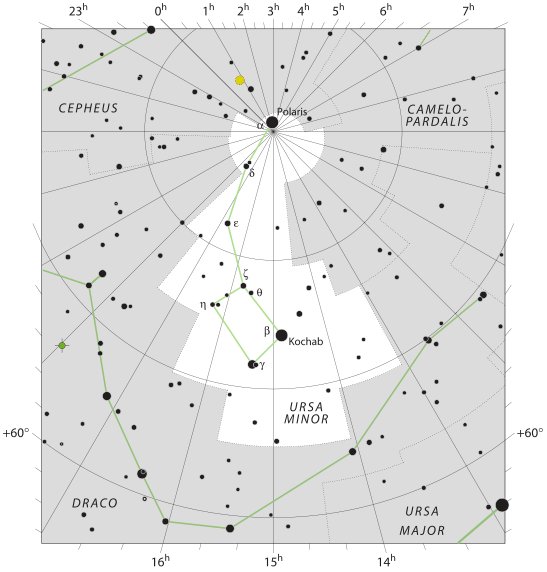
 |
 |
 |
 |
|
Bb3-1 (500 →
365 + 135) |
Bb3-2 (80 →
0h) |
Bb3-3 (81 =
502 -
421) |
Bb3-4 (87 - 5) |
|
ko te
nuku |
ku tara huki |
kua hama te
nuku |
mai tae te tagata - hua ra |
|
Maehamaeha, bright. Pau.:
hamama, to open. Mq.: haámama, to
open the mouth. Churchill. |
|
STARS VISIBLE
CLOSE TO THE RIGHT ASCENSION LINE AT THE FULL MOON: |
|
ANA-NIA-10 (Pillar-to-fish
by)
χ Ceti (26.1),
POLARIS = α Ursae Minoris,
BATEN KAITOS (Belly of the Fish) = ζ Ceti
(26.6),
METALLAH = α Trianguli
(26.9) |
Al Sharatain-1
/
Ashvini-1
/
Bond-16 (Dog)
/
Mahrū-sha-rishu-ku-1
(Front of the Head of Ku)
SEGIN =
ε
Cassiopeia, MESARTHIM =
γ
Arietis,
ψ
Phoenicis (27.2),
SHERATAN (Pair of Signs) =
β
Arietis,
φ
Phoenicis (27.4)
*351.0 = *27.4 - *41.4 |
ι Arietis (28.0), λ Arietis (28.2), υ Ceti
(28.8) |
ALRISHA (The Knot) = α Piscium,
χ Phoenicis (29.2),
ε
Trianguli (29.4),
ALAMAK
(Caracal) = γ Andromedae
(29.7)
*353.0 = *29.4 - *41.4 |
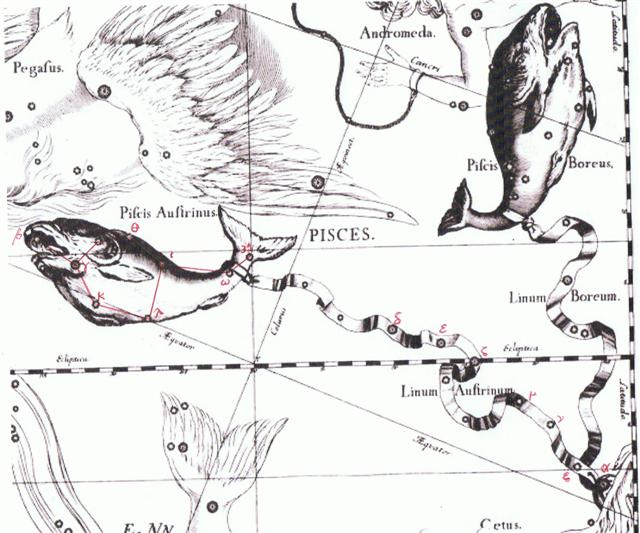 |
|
...Then the big Fish did
swallow him, and he had done acts worthy of
blame. Had it not been that he (repented and)
glorified Allah, He would certainly have
remained inside the Fish till the Day of
Resurrection. - Qur'an, chapter 37 (As-Saaffat),
verse 139–144. But We cast him forth on the
naked shore in a state of sickness, And We
caused to grow, over him, a spreading plant of
the gourd kind. And We sent him (on a mission)
to a hundred thousand (men) or more. And they
believed; so We permitted them to enjoy (their
life) for a while. - Qur'an, chapter 37
(As-Saaffat), verse 145–148 ...

... I know I
was born at the edge of the sea, and you cut off
a tuft of your hair and wrapped me in it and
threw me in the waves. After that the seaweed
took care of me and I drifted about in the sea,
wrapped in long tangles of kelp, until a breeze
blew me on shore again, and some jelly-fish
rolled themself around me to protect me on the
sandy beach. Clouds of flies settled on me and I
might have been eaten up by the maggots; flocks
of seabirds came, and I might have been pecked
to pieces. But then my great-ancestor Tama
nui ki te rangi arrived. He saw the clouds
of flies and all the birds, and he came and
pulled away the jelly-fish, and there was I, a
human being! Well, he picked me up and washed me
and took me home, and hung me in the rafters in
the warmth of the fire, and he saved my life.
And I grew, and eventually I heard about the
dancing you have here in this house, and that is
what brought me here tonight ... |
|
HALF A YEAR
AWAY AT THE NAKSHATRA SUN: |
|
No star listed (209) |
MUPHRID (Solitary Star) = η Bootis
(210.1), ζ Centauri (210.3) |
φ Centauri (211.0), υ¹ Centauri (211.1), υ²
Centauri (211.8), τ Virginis (211.9) |
AGENA (At the Knee) =
β
Centauri
(212.1),
θ
Apodis (212.5),
THUBAN (Dragon) =
α
Draconis
(212.8) |
|
... Thuban
had been the star at the North Pole when the
great Egyptian pyramids where built ... The star
could be seen, both by day and night, from the
bottom of the central passage of the Great
Pyramid of Cheops (Knum Khufu) at Ghizeh,
in 30° of north latitude, as also from the
similar points in five other like structures;
and the same fact is asserted by Sir John
Herschel as to the two pyramids at Abousseir
...
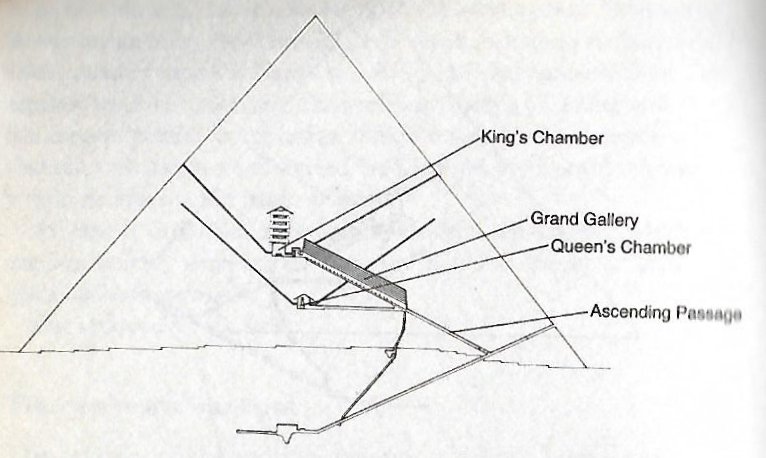
... For some
reason, too, it had taken their fancy to place
the Great Pyramid almost exactly on the 30th
parallel at latitude 29º 58' 51". This, a former
astronomer royal of Scotland once observed, was
'a sensible defalcation from 30º', but not
necessarily in error: For if the original
designer had wished that men should see with
their body, rather than their mental eyes, the
pole of the sky from the foot of the Great
Pyramid, at an altitude before them of 30º, he
would have had to take account of the refraction
of the atmosphere, and that would have
necessitated the building standing not at 30º
but at 29º 58' 22' ... |
|
CORRESPONDING
DATES ACCORDING TO THE GREGORIAN CALENDAR: |
|
April 16 (471
= 500 - 29)
→
Oct 16
(654 = 471 + 183) |
17 (26 + 81 =
107)
17
(290 = 26 + 264) |
April 18
Oct 18 |
80 + 29 = 109
80 + 212 =
292 |
Hamal was at the Full Moon 4 days after
Polaris. And here (at 2h) the empty dish Al-kes
could be observed to culminate at 21h in the day when
thus the Sun would be (according to
the nakshatra
system), viz. half a year away at 2h + 12h = 14h:
... Allen has documented all his star
culminations at 21h, which could be due to an effort of
keeping the culminations at their proper places
according to the ancients, 24h (spring equinox) - 21h =
3h = 24h / 8 = 45º. 3h corresponds to 366 / 8 = 45.75 of
my right ascension days and *366 - *46 = *320 (Dramasa,
σ Octantis) ...
 |
 |
 |
 |
|
Bb3-5 |
Bb3-6
(84) |
Bb3-7 |
Bb3-8 |
|
ki te henua |
koia - kua hoki to maro |
e manu rere ra |
ki te inoino - ka rere te
manu |
|
RIGHT
ASCENSION DAYS AT THE FULL MOON: |
|
Arku-sha-rishu-ku-2 (Back of the Head of Ku)
2h (*30.4 = *354.0 + *41.4)
κ
Arietis (30.3),
HAMAL (Sheep) =
α
Arietis
(30.5)
ALKES (α
Crateris) |
DELTOTUM
= β Trianguli
(31.2), ι Trianguli (31.7), η Arietis (31.9) |
ξ¹ Ceti
(32.1) |
γ,
δ
Trianguli (33.0),
χ
Persei (33.2),
10
Trianguli
(33.5),
θ
Arietis (33.3),
MIRA
(Astonishing) =
ο
Ceti
(33.7) |
|
djed |
 |
Phoenician
sāmekh |
 |
Greek
xi |
Ξ (ξ) |
|
... In rongorongo
times the last Greek lettered star
in Orion (ξ)
rose with the Sun in June 21. The
letter seems to have originated from
the Phoenician letter samekh
(tent peg, supporting prop), which
in turn may have been derived from
the ancient Egytian djed
column ...
 |
|
|
April 20
(110 = 22 * 5) |
21 (325 -
214 = 365 - 254) |
22 →
Dramasa (*32 * 10) |
23 (*31) |
|
... About
Carmenta we know from the historian Dionysus
Periergetis that she gave orcales to
Hercules and lived to the age of 110 years.
110 was a canonical number, the ideal age
which every Egyptian wished to reach and the
age at which, for example, the patriarch
Joseph died. The 110 years were made up of
twenty-two Etruscan lustra of five
years each; and 110 years composed the
'cycle' taken over from the Etruscans by the
Romans. At the end of
each cycle they corrected
irregularities in the solar calendar by
intercalation and held Secular Games. The
secret sense of 22 - sacred numbers were
never chosen haphazardly - is that it is the
measure of the circumference of the circle
when the diameter is 7. This proportion, now
known as pi, is no longer a religious
secret; and is used today only as a
rule-of-thumb formula, the real mathematical
value of pi being a decimal figure
which nobody has yet been able work out
because it goes on without ever ending, as
22 / 7 does, in a neat recurring sequence
[3.142857142857 ...]. Seven lustra add up to
thirty-five years, and thirty-five at Rome
was the age at which a man was held to reach
his prime and might be elected Consul. (The
same age was fixed upon by a
Classically-minded Convention as the
earliest at which an American might be
elected President of the United States.)
... |
|
RIGHT
ASCENSION AT THE SUN: |
|
Oct 20 |
21 (*214) |
22 (295 =
10 * 29½) |
23 |
|
14h (213.1)
π Hydrae, χ
Centauri (213.0),
MENKENT (Shoulder of the Centaur) =
θ
Centauri
(213.1) |
Neck-2 (Dragon)
ASELLUS TERTIUS (3rd Ass Colt) =
κ
Bootis,
κ
Virginis,
14 Bootis
(214.8) |
Al Ghafr-13 (The
Cover) /
Svāti-15 (Very Good)
/
TAHUA-TAATA-METUA-TE-TUPU-MAVAE-6
(a pillar to stand by)
15 Bootis
(215.2),
ARCTURUS =
α
Bootis (215.4),
ASELLUS SECUNDUS (2nd Ass Colt) =
ι
Bootis
(215.5),
SYRMA (Train of the Virgin's Robe) =
ι
Virginis,
λ
Bootis (215.6),
η
Apodis (215.8)
*174.0 = *215.4 - *41.4 |
ι Lupi,
18 Bootis
(216.3),
KHAMBALIA (Crooked-Clawed) = λ
Virginis (216.4),
υ Virginis (216.5), ψ Centauri (216.6), ε
Apodis (216.8)
*175.0 = *216.4 - *41.4 |
|
Egyptian hand |
 |
Phoenician kaph |
 |
Greek
kappa |
Κ (κ) |
|
Kaph is
thought to have been derived
from a pictogram of a hand (in
both modern Arabic and modern
Hebrew, kaph means
palm/grip) ...
... The
manik, with the tzab,
or serpent's rattles as prefix,
runs across Madrid tz. 22 , the
figures in the pictures all
holding the rattle; it runs
across the hunting scenes of
Madrid tz. 61, 62, and finally
appears in all four clauses of
tz. 175, the so-called 'baptism'
tzolkin. It seems impossible,
with all this, to avoid
assigning the value of grasping
or receiving. But in the final
confirmation, we have the direct
evidence of the signs for East
and West. For the East we have
the glyph Ahau-Kin, the
Lord Sun, the Lord of Day; for
the West we have Manik-Kin,
exactly corresponding to the
term Chikin, the biting
or eating of the Sun, seizing it
in the mouth.



The pictures
(from Gates) show east, north,
west, and south; respectively
(the lower two glyphs) 'Lord' (Ahau)
and 'grasp' (Manik).
Manik was the 7th day sign
of the 20 and Ahau the
last ... |
|
The star at the Mouth of the Southern Fish in
Pisces was named Fum al Samakah and although
the resemblence with the 'tent-peg' (ξ) may be a coincidence
I doubt it. Instead I guess there was a wordplay
involving the Phoenician letter sāmekh. Letters were originally composed to represent numbers
and sacred numbers were 'never chosen
haphazardly'. At the top of the head of Cetus was ξ¹ (6 days after
the right ascension line at Polaris)
pushing the Ram high:

 |
 |
 |
 |
 |
|
Bb3-9 (82 + 5) |
Bb3-10 (88) |
Bb3-11 |
Bb3-12 ↔
Aa1-41 |
Bb3-13 |
|
haati kava |
mai tae tuki to tauuru |
nuku |
te uru papageti |
tagata oho |
|
RIGHT
ASCENSION DAYS AT THE FULL MOON: |
|
April 24 |
25
(115 = 460 / 4) |
26 (177 -
61) |
27 |
28 (118 = 4 * 29½) |
|
FEBR 19
(50) |
20 (115 - 64) |
21 |
22 |
TERMINALIA |
|
No star listed (34) |
ξ Arietis (35.0),
ρ
Ceti (35.4),
12 Trianguli
(35.8), ξ² Ceti (35.9)
*360.0 = *35.4 - *41.4 |
σ Ceti (36.9) |
ν Ceti (37.9) |
ν Arietis (38.5), δ, ε Ceti (38.8) |
|
Sumerian
SAG |
 |
Phoenician
resh |
 |
Greek rho |
Ρ (ρ) |
|
... Resh (Arabic: rāۥ)
is the twentieth letter of many Semitic
alphabets, including Phoenician, Aramaic, Hebrew
... The word resh is usually assumed to
have come from a pictogram of a head, ultimately
reflecting Proto-Semitic *raۥ(i)š-.
The word's East Semitic cognate, rēš-,
was one possible phonetic reading of the
Sumerian cuneiform sign for 'head' (SAG).

.jpg)
... Then I
become aware of ... a presence - a faint,
ghostly glimmering, like moonglow, that has
appeared on the solstice stone. I don't know how
long it lasts, a second or two only I would
guess, but while it is there it seems less like
a projection - which I know it to be - than
something immanent within the stone itself. And
it seems to function as a herald for it fades
almost as soon as it has appeared and in its
place the full effect snaps on -
instantaneously. It wasn't there, and then it's
there. As Chris had described, the effect does
curiously resemble a poleaxe, or a flag on a
pole, and consists of a 'shaft', narrow at the
base but widening a little towards the top,
running up the left hand side of the solstice
stone, surmounted by a right-facing 'head' or
'flag'. An instant later an almond-shaped spot
of light, like an eye, appears a few centimeters
to the right of the 'flag' and the effect is
complete. Weirdly - I do not claim it has any
significance - this flag-on-a-pole symbol is the
ancient Egyptian hieroglyph neter,
meaning 'god', or 'a god' - and not to be
understood at all in the Judaeo-Christian usage
of that word but rather as a reference to one of
the supernatural powers or principles that guide
and balance the universe. Manifested here, in
this strange Stone Age temple, it glows, as
though lit by inner fire ...

Marija Gimbutas: 'To sleep within the Goddess's
womb was to die and to come to life anew'. In a
system of reincarnation the old one must die in
order to be reborn, of course. At midsummer Sun
comes to a standstill, and this must therefore
be an occasion when the 'flame of life' had to
be transported into a new body. |
|
|
RIGHT
ASCENSION AT THE SUN: |
|
Oct 24 |
25
(115 + 183) |
26 (360 - 61) |
27 (300) |
28 |
|
ASELLUS PRIMUS (1st Ass Colt) =
θ
Bootis
(217.8) |
τ
Lupi,
δ
Oct. (218.1),
φ
Virginis (218.7)
FOMALHAUT (α Piscis Austrini) |
σ
Lupi (219.1),
ρ
Bootis (219.5),
HARIS (Keeper) =
γ
Bootis
(219.7) |
σ Bootis (220.2),
η Centauri
(220.4)
*179.0 = *220.4 - *41.4 |
ρ Lupi (221.0),
TOLIMAN = α
Centauri
(221.2), π Bootis (221.8), ζ Bootis (221.9) |
 |
Probably the creator of the text illustrated his
π glyph (3-14) on side b in a way which alluded to the following Claws of the
Scorpion:

 |
 |
 |
 |
 |
|
Bb3-14 → π |
Bb3-15 |
Bb3-16 |
Bb3-17 (516) |
Bb3-18 (96) |
|
ki te huaga |
tagata oho |
ki to toa |
ko te marama kua
haga i ruga ia ia |
ko te toa |
|
Haga. 1. Bay, fishing spot.
(Figuratively) he haga o te ákuáku, it is the
[evil] spirit's fishing spot, i.e. a place where
they hide waiting for people to fall under their
power. 2. To want, to love. Ku haga á i te vai,
I want water, I am thirsty. Vanaga. 1. Bay, strait,
anchorage, strand, beach. P Mq.: hana,
haka, small bay, creek, cove. 2. Work, labor,
employment, act, affair, creation, design, state,
maker, fashion, manufacture, occupation, profession;
to do, to make, to construct, to employ, to form, to
manufacture, to fashion, to found, to be busy with;
haga rakerake, crime; tagata haga ei mea,
mercenary; haga no iti, to plot mischief;
haga ke, to act contrary; haga takataka,
to disjoin; haga nui, difficulty, fatigue, to
weary; tuhi ki te haga, to give employment;
haga hakahou, to make over, to renew,
recovery; haga koroiti, to deal prudently;
haga nuinui ke, to overburden. P Pau.: haga,
to do, action, work, a deed. Mgv.: haga,
aga, work, labor. Mq.: hana, haka,
action, act, work, occupation. Ta.: haa,
work, to labor, to make. 3. Agreement, conduct,
liking, intention, desire, will; to resolve, to
permit, to endeavor, to tolerate, to be willing, to
wish, to approve; haga ihoiho, fixed desire;
haga mai, haga no mai, to agree, to
hearken favorably; tae haga, despite,
involuntary, to refuse, to renounce; noho
hakahaga, apathy. 4. = haka. Pau.:
haga = haka. 5. Mgv.: haga, a
fish. Mq.: haka, id. 6. Mgv.: haga, a
fishtrap. Sa.: faga, a fish-trap, bird-cage.
Ma.: hanganoa, a small basket for cooked
fish. 7. Mgv.: haga, a measure of a fathom.
Ta.: aa, to measure length. Mq.: aka,
ana, to measure with the arms. Ma.: whanga,
id. Churchill. Hagaava (haga 1 -
ava 2), entrance of a harbor. Hagahaga:
1. (haga 2), work. 2. hesitation, to
hesitate. Churchill.
Ruga. Upper part, higher part; when used
as a locative adverb, it is preceded by a
preposition: i ruga, above, on; ki ruga,
upwards, mai ruga, from above. When used
with a noun the same preposition is repeated:
he-ea te vî'e Vakai, he-iri ki ruga ki te Ahu ruga,
the woman Vakai went, she climbed Ahu Runga.
Ruga nui, high, elevated, lofty: kona ruga
nui, high place, elevated position, high office;
mana'u ruga nui, elevated thoughts. Vanaga.
High up; a ruga, above; ki ruga, on,
above, upon; ma ruga, above; o ruga,
upper; kahu o ruga, royal (sail); ruga iho,
celestial. Hakaruga, to accumulate, to draw
up. P Pau., Mgv.: ruga, above. Mq.: úna,
úka, id. Ta.: nua, nia, id.
Churchill. |
|
RIGHT
ASCENSION DAYS AT THE FULL MOON: |
|
April 29 |
30 |
May 1 (11 * 11) |
2 |
3 |
|
μ
Arietis (39.4), HEAD OF THE FLY = 35 Arietis
(39.6),
KAFFALJIDHMA (Part of a Hand) =
γ
Ceti,
θ
Persei (39.8)
*363.0
= *39.4 - *41.4 |
π
Ceti,
ο
Arietis (40.0),
ANGETENAR (Bend in the River) = τ¹ Eridani,
μ Ceti
(40.2),
RIGHT WING = 39 Arietis
(40.9) |
Bharani-2 (Yoni) /
Stomach-17 (Pheasant)
π
Arietis (41.2),
MIRAM (Next to the Pleiades) =
η
Persei
(41.3),
BHARANI = 41 Arietis (41.4),
τ²
Eridani,
σ
Arietis (41.7) |
TA
LING (Great Mound) = τ Persei (42.4)
*1.0 = *42.4 - *41.4 |
ρ
Arietis (43.0),
GORGONEA SECUNDA =
π
Persei
(43.5),
ACAMAR (End of the River) =
θ
Eridani
(43.6),
ε
Arietis (43.7),
λ
Ceti (43.9)
DENEBOLA (β Leonis) |
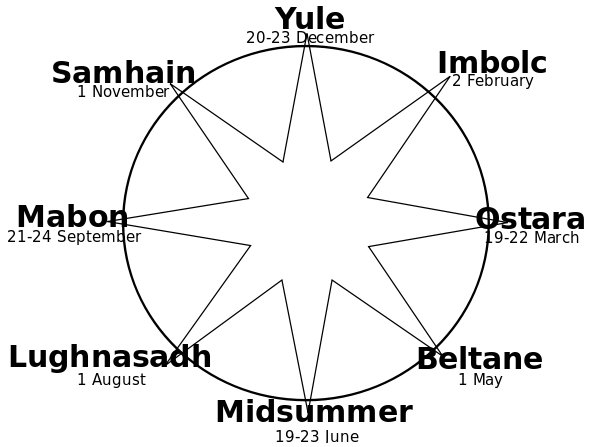 |
|
RIGHT
ASCENSION AT THE SUN: |
|
Oct 29 |
30 |
31 |
Nov 1 (15 * 15 +
80) |
2 (306) |
|
31 Bootis
(222.0),
YANG MUN (South Gate) =
α
Lupi
(222.1),
RIJL AL AWWA (Foot of the Barker) =
μ
Virginis
(222.5),
ο
Bootis (222.9) |
IZAR (Girdle) =
ε
Bootis
(223.0),
109 Virginis,
α
Apodis (223.3),
μ
Librae (223.8) |
Al Zubānā-14a (Claws)
/
Visakha-16 (Forked)
/
Root-3 (Badger)
ZUBEN ELGENUBI (Southern Claw) =
α
Librae
(224.2),
ξ
Bootis,
ο
Lupi (224.5) |
KOCHAB
(Kakkab) = β Ursae Min. (225.0),
ξ Librae (225.7) |
KE KWAN (Cavalry Officer) =
β
Lupi
(226.3),
KE KWAN =
κ
Centauri (226.4), ZUBEN ELAKRIBI (Claw of the
Scorpion) =
δ
Librae
(226.8),
π¹
Oct.
(226.9) |
|
Egyptian
sticks |
 |
Phoenician
taw |
 |
Greek chi |
Χ (χ) |
|
Greek tau |
Τ (τ) |
|
In Plato's Timaeus, it is
explained that the two bands that form the soul
of the world cross each other like the letter Χ.

Roman XII = 12 →
XIII = 13, with the Nose in between - and later,
after the Mouth, the cycle would begin anew (I).
Chi or X is often used to
abbreviate the name Christ, as in the holiday
Christmas (Xmas). When fused within a single
typespace with the Greek letter Rho, it is
called the labarum and used to represent the
person of Jesus Christ. (Wikipedia)

... tau is the 19th
letter of the Greek alphabet. In the system of
Greek numerals it has a value of 300 ... Taw
is believed to be derived from the Egyptian
hieroglyph meaning 'mark' ...
Taw, Tav or Taf
is the twenty-second and last letter in many
Semitic abjads ... In gematria Tav
represents the number 400, the largest single
number that can be represented without using the
Sophit forms ...
'From Aleph to Taf'
describes something from beginning to end; the
Hebrew equivalent of the English 'From A to Z'
...
Tav is the last letter of
the Hebrew word emet, which means truth.
The midrash explains that emet is made up
of the first, middle, and last letters of the
Hebrew alphabet (Aleph, Mem, and
Tav...).
Sheqer (falsehood), on the other hand, is
made up of the 19th, 20th, and 21st (and
penultimate) letters.
Thus, truth is all-encompassing,
while falsehood is narrow and deceiving. In
Jewish mythology it was the word emet
that was carved into the head of the Golem
which ultimately gave it life. But when the
letter 'aleph' was erased from the Golem's
forehead, what was left was 'met' - dead.
And so the Golem died ... (Wikipedia)

|
The open Mouth of the Great Fish (vaha te ika)
was evidently near the bag for safe-keeping the Medusa demon (Al-gol),
and the pair of shining objects held in the hands of Perseus could
correspond to Kochab and Polaris.

 |
 |
 |
 |
 |
 |
 |
|
Bb3-19 |
Bb3-20 |
Bb3-21 (520) |
Bb3-22 (100) |
Bb3-23 |
Bb3-24 |
Bb3-25 (524) |
|
E tagata hakatu ki to ika e
vaha te ika |
ma te ua |
kua pua te hahine |
kua tere ko to haga |
ki te tagata haga
|
ki tona
mea ke - kua oho koia ki te haga |
mai moe koia ki te mago -
kua haga i tona mea ke |
|
RIGHT
ASCENSION DAYS AT THE FULL MOON: |
|
MENKAR (The Nose) =
α
Ceti
(44.7) |
3h (45.7)
GORGONEA TERTIA =
ρ
Persei
(45.1),
ALGOL (The Demon)
=
β
Persei
(45.9) |
ι
Persei (46.1),
MISAM (Next to the Pleiades) =
κ
Persei
(46.2),
GORGONEA QUARTA =
ω
Persei
(46.7),
BOTEIN (Pair of Bellies) =
δ
Arietis
(46.9) |
ζ Arietis (47.7) |
ZIBAL (Young Ostriches)
=
ζ
Eridani (48.0),
κ
Ceti (48.9) |
τ Arietis (49.7) |
ALGENIB PERSEI = α Persei (50.0),
ο Tauri (50.2), ξ Tauri (50.8)
GIENAH (γ Corvi) |
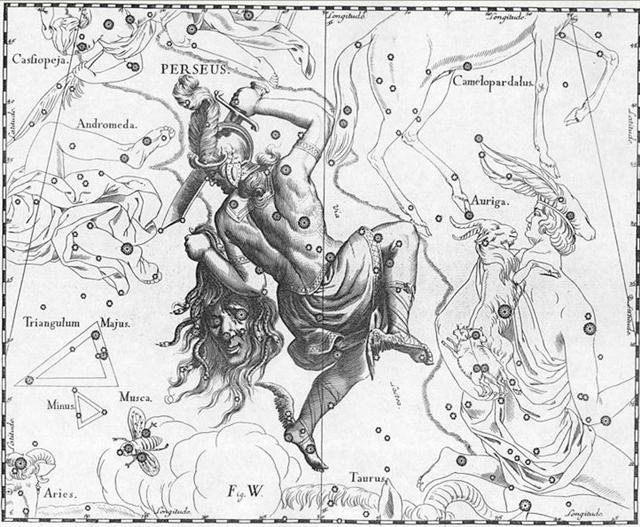 |
|
RIGHT
ASCENSION AT THE SUN: |
|
Nov 3 |
4 |
5 |
6 (310) |
7 |
8 |
9 |
|
ω
Bootis (227.2),
NEKKAR (Herdsman) = β Bootis
(227.3),
σ
Librae (227.5),
π²
Oct.
(227.7),
NADLAT (Mean Little Ones) = ψ Bootis
(227.8), π Lupi (227.9) |
15h (228.3)
ZUBEN HAKRABIM = ν Librae
(228.3), λ Lupi (228.9) |
ω
Oct. (229.3),
ι
Librae (229.6),
κ
Lupi (229.7),
ζ
Lupi (229.8) |
Al Zubānā-14b (Claws)
χ
Bootis (230.3),
PRINCEPS =
δ
Bootis
(230.6),
ZUBEN ELSCHEMALI (Northern Claw) =
β
Librae
(230.8) |
μ
Lupi,
γ
Tr. Austr.
(231.3), ο Librae (231.8) |
ο
Cor. Borealis (232.0),
δ
Lupi (232.1),
φ¹,
ν²
Lupi (232.2),
ν¹
Lupi (232.3),
ε
Lupi (232.4),
φ²
Lupi (232.5),
PHERKAD (The Dim One of the Two Calves) =
γ
Ursae Min.
(232.6),
ε
Librae (232.7),
η
Cor. Borealis (232.8),
υ
Lupi (232.9)
*191.0 = *232.4 - 41.4 |
ALKALUROPS (The Herdsman's Lance) =
μ
Bootis
(233.1),
ED ASICH (Male Hyena) =
ι
Draconis
(233.2) |
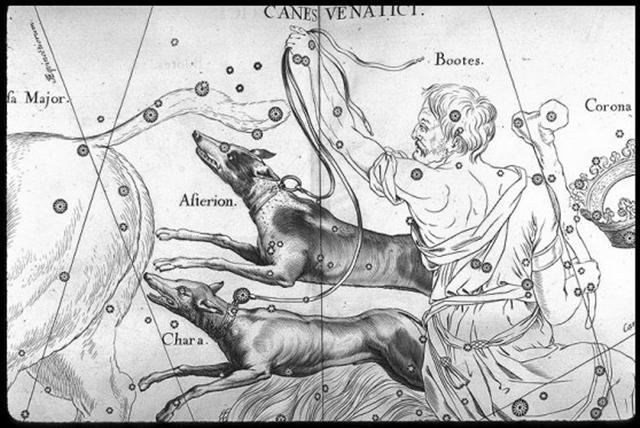 |
|
*44 = *409 |
*410 |
*411 |
*412 |
*48 = *413 |
→
BHARANI |
*50 |
|
May 4 |
5 (125 = 5 * 25) |
6 |
7 |
8 (2 * 64) |
9 |
10 (130) |
|
"March
24 |
25 (125 - 41) |
26 |
27 |
28 |
29 (88) |
30 |
At Bb3-26 (→ 32 * 6 = 192 =
270 - 3 * 26) the Sun would have reached his gate
of exit (day 314):
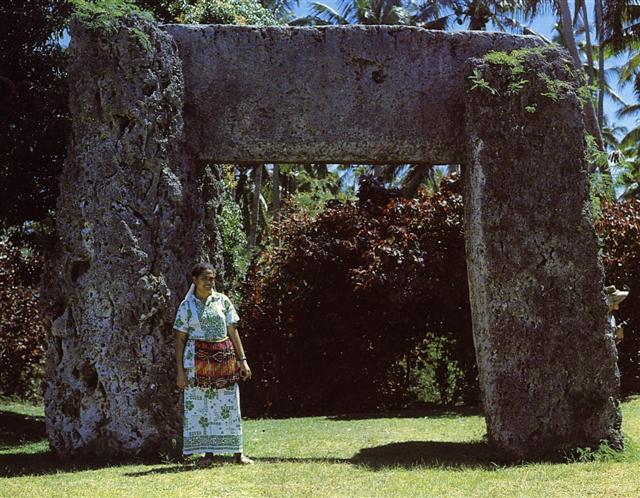
 |
 |
 |
 |
 |
 |
 |
|
Bb3-26
→ 192 |
Bb3-27 |
Bb3-28 |
(472 - 365 =
107) |
Bb3-30 |
Bb3-31 |
(18 * 29½) |
|
ko te marama
kua haga i tona mea ke |
ma te hakaua |
koia kua haga i to kava |
kua haati ia e kava |
ko te kava o Motoipua |
ko te marama
kua haga i tona mea ke |
o te kava kua haati
|
|
Kava. 1. Sour; salty:
vai kava, saltwater, sea; te kava o te
haíga, acrid underarm smell; tagata kava
- tagata kakara i te kava, man with smelly
armpits. 2. He-kava te haha, to be
thirsty. 3. To turn sour, to become embittered,
bad-tempered, exasperated (used with manava):
tagata manava kava, bad-tempered, angry
man. Vanaga. Bitter, salt; vai kava,
brackish water; hakakava, to embalm;
kavakava, acid, sharp, bitter, salt,
spiritous, vinegar, poisonous, disagreeable;
akavakava, to make sharp; hakakavakava,
to make acid. P Pau.: kava, disagreeable
to the taste; kavakava, acid, sharp.
Mgv.: kava, to be bitter, sour, acid,
salt. Mq.: kava, bitter. Ta.: ava,
bitter, acid, salt. Kavahia: 1. Comfort,
comfortable, to feast; hakakavahia,
comfort, comfortable. 2. Repulsive (of food),
disgusted; hakakavahia, repulsion.
Kavakava, rib; moi kavakava, a house
god G. P Mgv.: vakavaka, the breast. Mq.:
vakavaka, vaávaá, rib. Ma.:
wakawaka, parallel ridges. We shall need all
the available material in order to determine the
germ sense of this word. Sa.: va'ava'a,
the breast-bone of a bird; fa'ava'a, the
frame as of a slate. To.: vakavaka, the
side. Fu.: vakavaka, the side below the
armpit. Ha.: hoowaa, to make furrows. In
all these we may see the idea of ridge or
depression, or of both, as primal (Rapanui,
Samoa, Marquesas, Maori, Hawaii), and as
secondary the part of the body where such
appearances is common (Mangareva, Tonga,
Futuna). Churchill. Mgv.: kava, the
pepper plant and the drink made therefrom. Ta.:
ava, id. Mq.: kava, id. Sa.:
'ava, id. Ma.: kawa, a pepper.
Kavakava, a fish. Sa.: 'ava'ava, id.
Kavapui, a tree. Ta.: avapuhi, a
fragrant plant. Mq.: kavapui, wild
ginger. Sa.: 'avapui, id. Ha.: awapuhi,
id. Churchill. Mq.: ava, a small fish of
sweet water. Sa.. 'ava'ava, a small fish.
Ha.: awa, a fish. Kakava, burnt.
Sa.: 'a'ava, very hot. Churchill.
 |
|
RIGHT
ASCENSION DAYS AT THE FULL MOON: |
|
σ Persei (51.6) |
No star listed (52) |
ψ
Persei (53.1)
ACRUX (α
CRUCIS) |
δ
Persei (54.7) |
Al Thurayya-27 (Many
Little Ones) /
Krittikā-3 (Nurses of
Kārttikeya) /
TAU-ONO (Six Stones)
ATIKS =
ο
Persei, RANA (Frog) =
δ
Eridani
(55.1),
CELAENO (16 Tauri), ELECTRA (17), TAYGETA (19),
ν
Persei (55.3), MAIA (20), ASTEROPE (21), MEROPE
(23)
(55.6) |
Hairy Head-18 (Cockerel)
/
Temennu-3 (Foundation
Stone)
ALCYONE
(56.1),
PLEIONE (28 Tauri), ATLAS (27 Tauri)
(56.3) |
MENKHIB (Next to the Pleiades =
ζ
Persei
(57.6)
PORRIMA (γ Virginis) |
|
*416 |
*417 |
*418 |
*419 |
*55 = *408 + *12 |
*56 =
*421 |
*422 |
|
Yesterday evening I happened to
stumble on a TV program discussing the ziggurath
in Ur. It was stated that its central feature
had been determined to point at the most
northern path of the Moon at 56º.
This idea, I think, should be put in parallel
with their Foundation Stone (Alcyone) at
*56. |
|
May 11 |
12 (2 * 66) |
13 |
14 |
15 (365
+ 135) |
16 (2 * 68) |
17 (137) |
|
"March 31 (90) |
"April 1 |
2 (133 - 41) |
3 |
4 |
5 |
6 (96) |
|
RIGHT
ASCENSION AT THE SUN: |
|
Nov 10 (314) |
11 |
12 |
13 |
14 |
15 |
16 (320) |
|
NUSAKAN (Pauper's Bowl) = β Cor. Bor.
(234.0), κ¹ Apodis (234.3), ν Bootis (234.7), ζ
Librae (234.9) |
θ Cor. Borealis (235.3), γ Lupi (235.6),
GEMMA = α Cor. Bor.,
ZUBEN ELAKRAB = γ Librae, QIN = δ Serpentis, ε
Tr. Austr.
(235.7), μ Cor. Borealis (235.8), υ Librae
(235.9)
SIRRAH (α Andromedae) |
φ Bootis (236.2), ω Lupi, τ Librae (236.3), ψ¹
Lupi (236.7), ζ Cor. Borealis (236.9) |
κ
Librae (237.2),
ι
Serpentis (237.4),
ψ²
Lupi,
ρ
Oct.
(237.5), γ Cor. Borealis, η Librae (237.7), COR
SERPENTIS = α Serpentis
(237.9)
*196.0 = *237.4 - *41.4 |
π
Cor. Borealis,
UNUK ELHAIA (Necks of the Serpents) =
λ
Serpentis
(238.1),
CHOW =
β
Serpentis
(238.6) |
κ
Serpentis (239.3),
δ
Cor. Borealis,
TIĀNRŪ =
μ
Serpentis
(239.5),
χ
Lupi, (239.6),
ω
Serpentis (239.7),
BA (= Pa) =
ε
Serpentis,
χ
Herculis (239.8).
κ
Cor.
Borealis, ρ Serpentis (239.9) |
λ
Librae (240.0),
β
Tr. Austr. (240.3),
κ
Tr. Austr. (240.4),
ρ
Scorpii (240.8)
*199.0 = *240.4 - *41.4 |
|
... In other
words, the ancient Druidic religion based on the
oak-cult will be swept away by Christianity and
the door - the god Llyr - will languish
forgotten in the Castle of Arianrhod, the
Corona Borealis. This helps us to understand
the relationship at Rome of Janus and the White
Goddess Cardea who is ... the Goddess of Hinges
who came to Rome from Alba Longa. She was the
hinge on which the year swung - the ancient
Latin, not the Etruscan year - and her
importance as such is recorded in the Latin
adjective cardinalis - as we say in
English 'of cardinal importance - which was also
applied to the four main winds; for winds were
considered as under the sole direction of the
Great Goddess until Classical times ... |
Then the work was beginning to create a new One:
... Called the winds to
work the bellows // To the utmost of their power. //
Then the winds arose in fury, // Blew the east wind,
blew the west wind, // And the south wind yet more
strongly, // And the north winds howled and blustered.
Thus they blew one day, a second, // And upon the third
day likewise. // Fire was flashing from the windows, //
From the doors the sparks were flying // And the dust
arose to heaven, // With the clouds the smoke was
mingled.
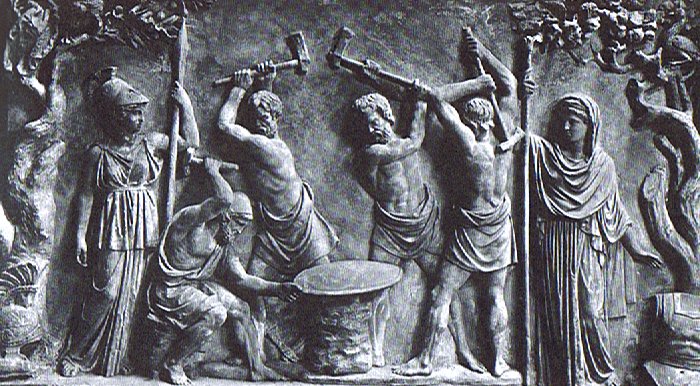
Then again smith Ilmarinen, // On the evening of the
third day, // Stooped him down, and gazed intently // To
the bottom of the furnace, // And he saw the Sampo
forming, // With its many-coloured cover. Thereupon
smith Ilmarinen, // He the great primeval craftsman, //
Welded it and hammered at it, // Heaped his rapid blows
upon it, // Formed with cunning art the Sampo. And on
one side was a corn-mill, // On another side a
salt-mill, // And upon the third a coin-mill. Now was
grinding the new Sampo, // And revolved the pictured
cover, // Chestfuls did it grind till evening, // First
for food it ground a chestful, // And another ground for
barter, // And a third it ground for storage. Now
rejoiced the Crone of Pohja, // And conveyed the bulky
Sampo, // To the rocky hills of Pohja, // And within the
Mount of Copper, // And behind nine locks secured it.
There it struck its roots around it, // Fathoms nine in
depth that measured, // One in Mother Earth deep-rooted,
// In the strand the next was planted, // In the nearest
mount the third one ...
 |
 |
|
Bb3-33 (111 =
2 * 266 - 421) |
Bb3-34 (13 * 41 =
542 - 9 = 168 + 365) |
|
mai tae tu |
ki te hipu |
|
Hipu. Calabash, shell, cup,
jug, goblet, pot, plate, vase, bowl, any such
receptacle; hipu hiva, melon, bottle; hipu
takatore, vessel; hipu unuvai,
drinking glass. P Mgv.: ipu, calabash, gourd
for carrying liquids. Mq.: ipu, all sorts of
small vases, shell, bowl, receptacle, coconut shell.
Ta.: ipu, calabash, cup, receptacle.
Churchill.
 |
|
Nov 17 |
18 (322) |
|
Iklīl al Jabhah-15 (Crown
of the Forehead) /
Anuradha-17 (Following
Rādhā) /
Room-4 (Hare)
ξ
Lupi,
λ
Cor. Bor.(241.1),
ZHENG =
γ
Serpentis,
θ
Librae (241.2),
VRISCHIKA =
π
Scorpii
(241.3),
ε
Cor.
Borealis (241.5),
DSCHUBBA
(Front of Forehead) = δ Scorpii
(241.7), η Lupi (241.9) |
υ
Herculis (242.3),
ρ
Cor. Borealis (242.4),
ι
Cor. Borealis (242.5),
θ
Draconis (242.6),
ξ
Scorpii (242.7)
SCHEDIR
(Breast) α Cassiopeiae
*201.0 = *242.4 - *41.4 |
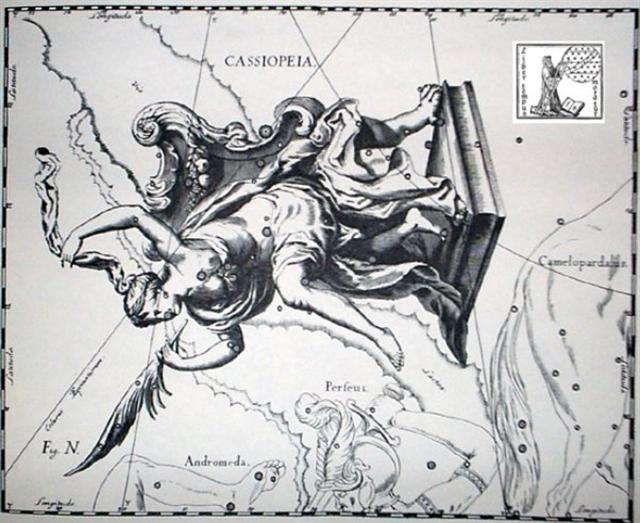 |
|
RIGHT
ASCENSION DAYS AT THE FULL MOON: |
|
ZAURAK (Boat) = γ Eridani
(58.9) |
λ Tauri (59.3), ν Tauri (59.9) |
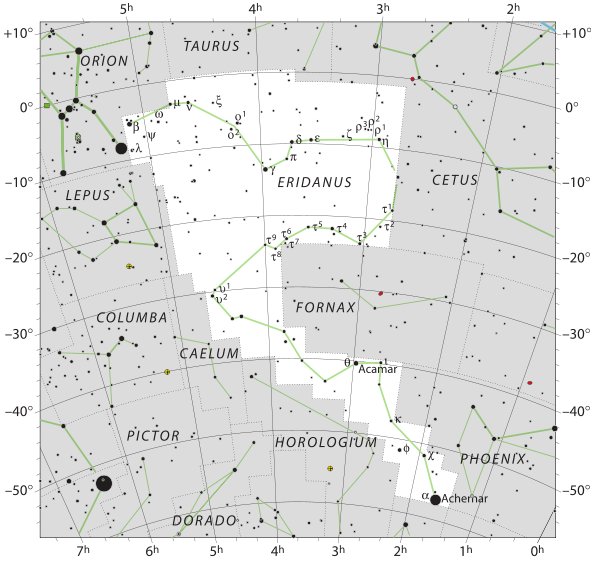 |
Afterwards the Milky Way River would emanate from
the Breast of Cassiopeia, dividing the whole into a pair
of twins:
... In the
morning of the world, there was nothing but water. The
Loon was calling, and the old man who at that time bore
the Raven's name, Nangkilstlas, asked her why.
'The gods are homeless', the Loon replied. 'I'll see to
it', said the old man, without moving from the fire in
his house on the floor of the sea. Then as the old man
continued to lie by his fire, the Raven flew over the
sea. The clouds broke. He flew upward, drove his beak
into the sky and scrambled over the rim to the upper
world. There he discovered a town, and in one of the
houses a woman had just given birth.
The Raven stole the skin and form of
the newborn child. Then he began to cry for solid food,
but he was offered only mother's milk. That night, he
passed through the town stealing an eye from each
inhabitant. Back in his foster parents' house, he
roasted the eyes in the coals and ate them, laughing.
Then he returned to his cradle, full and warm. He had
not seen the old woman watching him from the corner -
the one who never slept and who never moved because she
was stone from the waist down. Next morning, amid the
wailing that engulfed the town, she told what she had
seen. The one-eyed people of the sky dressed in their
dancing clothes, paddled the child out to mid-heaven in
their canoe and pitched him over the side ...
.jpg)
... The bereaved and sorrowing Isis, meanwhile,
wandering over the world in her quest - like Demeter in
search of the lost Persephone - came to Byblos, where
she learned of the wonderful tree. And, placing herself
by a well of the city, in mourning, veiled and in humble
guise - again like Demeter - she spoke to none until
there approached the well the handmaidens of the queen,
whom she greeted kindly. Braiding their hair, she
breathed upon them such a wondrous perfume that when
they returned and Astarte saw and smelt the braids she
sent for the stranger, took her into the house, and made
her the nurse of her child. The great goddess gave the
infant her finger instead of breast to suck and at
night, having placed him in a fire to burn away all that
was mortal, flew in the form of a swallow around the
pillar, mournfully chirping. But the child's mother,
Queen Astarte, happening in upon this scene, shrieked
when she spied her little son resting in the flames and
thereby deprived him of the priceless boon. Whereupon
Isis, revealing her true nature, begged for the pillar
and, removing the sarcophagus, fell upon it with a cry
of grief so loud that the queen's child died on the spot
...
The Sun was at the Sting of the Scorpion (Lesath) in
November 20 (324), but also 20 days later at
*264.
 |
 |
 |
|
Bb3-35 |
Bb3-36 (535) |
Bb3-37 (115 =
460 / 4) |
|
gutu huri - e toa maro |
kua vero
hia raua - ki to
maro |
|
Nov 19 |
20 |
21 (325 = 321
+ 4) |
|
16h (243.5)
ACRAB (Scorpion) = β Scorpii,
JABHAT AL ACRAB (Forehead of the Scorpion) = ω
Scorpii
(243.3), θ Lupi,
RUTILICUS = β Herculis
(243.5),
MARFIK (Elbow) = κ Herculis
(243.7), φ Herculis (243.8) |
ψ
Scorpii (244.6),
LESATH (Sting) =
ν
Scorpii
(244.8) |
χ
Scorpii (245.1),
YED PRIOR (Hand in Front) =
δ
Ophiuchi,
δ
Tr.
Austr. (245.5) |
|
RIGHT
ASCENSION DAYS AT THE FULL MOON: |
|
4h (60.9)
JĪSHUĬ = λ Persei
(60.7)
COR CAROLI (α Canum Ven.) |
υ Persei (61.2) |
BEID (Egg) =
ο¹
Eridani
(62.2),
μ
Persei (62.8)
VINDEMIATRIX ( ε Virginis) |
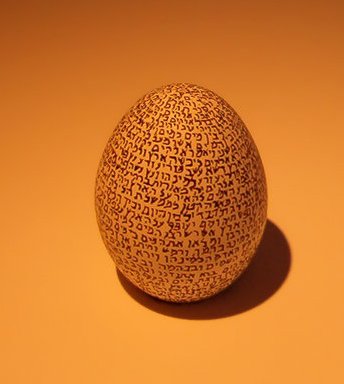 |
 |
 |
 |
|
Bb3-38 (537 =
542 - 5) |
Bb3-39 |
Bb3-40 (118 =
4 * 29½) |
|
ma to kava - kua huri te hatu |
ki te henua |
ma te maitaki |
|
... In Hindu
legend there was a mother goddess called
Aditi, who had seven offspring. She is
called 'Mother of the Gods'. Aditi, whose
name means 'free, unbounded, infinity' was
assigned in the ancient lists of constellations
as the regent of the asterism Punarvasu.
Punarvasu is dual in form and means 'The
Doublegood Pair'. The singular form of this noun
is used to refer to the star Pollux. It is not
difficult to surmise that the other member of
the Doublegood Pair was Castor. Then the
constellation Punarvasu is quite
equivalent to our Gemini, the Twins. In far
antiquity (5800 BC) the spring equinoctial point
was predicted by the heliacal rising of the
Twins ...
Maitaki.
Clean, neat, pure, pretty, nice, beautiful,
handsome; tagata rima maitaki,
clean-handed man, correct man. Vanaga. 1. Good.
Henua maitaki = the good earth. 2. Shine.
Marama maitaki = the shining moon.
Barthel. Ce qui est bon. Jaussen according to
Barthel. Meitaki, good, agreeable,
efficacious, excellent, elegant, pious, valid,
brilliant, security, to please, to approve (maitaki);
ariga meitaki, handsome, of pleasant
mien; mea meitaki ka rava, to deserve;
meitaki ke, marvelous, better.
Hakameitaki, to make good, to amend, to do
good, to bless, to establish. Meitakihaga,
goodness. PS Pau.: maitaki, good. Mgv.:
meitetaki, beautiful, good. Mq.:
meitai, good, agreeable, fit, wise,
virtuous. Ta.: maitaiki, good, well.
Niuē: mitaki, good. Maitakia,
clean. Churchill. |
|
Nov 22 |
23 (327) |
24 |
|
YED POSTERIOR (Hand Behind) =
ε
Ophiuchi,
RUKBALGETHI SHEMALI (Northern Knee of the Giant)
=
τ
Herculis
(246.6).
δ
Apodis (246.7),
ο
Scorpii (246.8) |
Heart-5 (Fox)
σ
Scorpii
(247.0),
HEJIAN =
γ
Herculis
(247.2),
ψ
Ophiuchi (247.7) |
ρ
Ophiuchi (248.1),
KAJAM (Club) =
ω
Herculis
(248.3),
χ
Ophiuchi (248.5),
SHE LOW (Market Tower) =
υ
Ophiuchi,
Tr.
Austr. (248.7), ζ Tr. Austr. (248.8) |
 |
|
RIGHT
ASCENSION DAYS AT THE FULL MOON: |
|
Al Dabarān-2 (The
Follower)
HYADUM I =
γ
Tauri (63.4)
*22.0 = *63.4 - *41.4 |
HYADUM II = δ¹ Tauri
(64.2) |
Net-19 (Crow)
AIN (Eye) =
ε
Tauri,
θ¹
Tauri,
θ²
Tauri (65.7) |
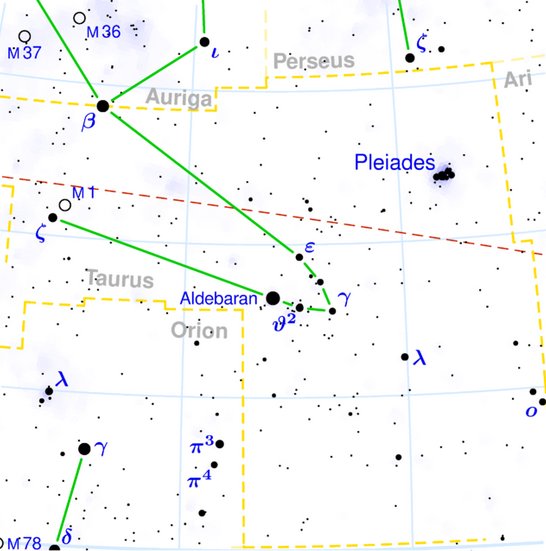 |
|
... There was no water in the
village. The lakes and rivers were dry. Raven
and Crow, two young girls who were having their
first menstrual courses, were told to go and
draw water from the ocean. Finding the journey
too long, Raven decided just to urinate into her
basket-bucket. She decieved no one and was
severly scolded. Crow returned much later but
with drinking water. As a punishment, Raven was
condemned never to find water in the summer;
only in winter would she find something to
drink. For that reason the Raven never drinks
during the hot months; she speaks with a raucous
voice because of her dry throat ... |
 |
 |
 |
|
Bb3-41 (540 = 3 * 180) |
Bb3-42 (541 - 421
= 120) |
Bb3-43 (542 =
177 + 365) |
|
Itzam-Yeh defeated |
28 May (148 = 225 - 77), 3149 BC |
|
1st 3-stone place |
21 May (141 = 225 - 84), 3114 BC |
|
Creation of our present world |
13 August (225), 3114 BC |
|
Och ta chan (Hun-Nal-Ye 'entered
or became the sky') |
5 February (36 = 141 - 105), 3112 BC |
|
21 May, 3114 BC - 5 February, 3112 BC = 224 +
282 + 36 =
506
+ 36 = 542
542 'happens to be' the sum of
365 days and 6 * 29½ nights. |
|
|
mai tae vere
hia - ki te pito o
te henua |
e nuku hoi |
kua here te toa - i ruga o to
maro |
|
Vere. 1. Beard, moustache (vede
G); vere gutu, moustache; verevere,
shaggy, hairy, tow, oakum. Mgv.: veri,
bristly, shaggy, chafed (of a cord long in use).
Mq.: veevee, tentacles. Ta.: verevere,
eyelash. 2. To weed (ka-veri-mai, pick,
cut-grass T); verevere, to weed. P Mgv.:
vere, to weed. Mq.: veéveé,
vavee, id. 3. Verega, fruitful,
valuable; verega kore, unfruitful,
valueless, contemptible, vain, futile,
frivolous; tae verega, insignificant,
valueless; mataku verega kore, scruple.
Mgv.: verega, a design put into
execution; one who is apte, useful, having a
knowledge how to do things. 4. Ta.: verevere,
pudenda muliebria. Ma.: werewere, id.
(labia minora). Churchill. Sa.:
apungaleveleve, apongaleveleve, a
spider, a web. To.: kaleveleve, a large
spider. Fu.: kaleveleve, a spider, a web.
Niuē:
kaleveleve, a
cobweb. Nukuoro: halaneveneve,
a spider. Uvea: kaleveleve,
a spider. Mgv.: pungaverevere,
a spider. Pau.: pungaverevere,
cloth. Mg.: pungaverevere,
a cobweb. Ta.: puaverevere,
id. Mao.: pungawerewere,
puawerewere,
puwerewere,
a spider. Ha.: punawelewele,
a spider, a web. Mq.: pukaveevee,
punaveevee,
id. Vi.: lawa,
a fishing net; viritālawalawa,
a cobweb; butalawalawa,
a spider. Churchill 2.
Pito. 1. Umbilical cord; navel;
centre of something: te pito o te henua,
centre of the world. Ana poreko te poki, ina
ekó rivariva mo uru ki roto ki te hare o here'u
i te poki; e-nanagi te pito o te poki, ai
ka-rivariva mo uru ki roto ki te hare, when
a child is born one must not enter the house
immediately, for fear of injuring the child
(that is, by breaking the taboo on a house where
birth takes place); only after the umbilical
cord has been severed can one enter the house.
2. Also something used for doing one's buttons
up (buttonhole?). Vanaga. Navel. Churchill. H
Piko 1. Navel, navel string, umbilical cord.
Fig. blood relative, genitals. Cfr piko pau
'iole, wai'olu. Mō ka piko, moku
ka piko, wehe i ka piko, the navel cord is
cut [friendship between related persons is
broken; a relative is cast out of a family].
Pehea kō piko? How is your navel [a
facetious greeting avoided by some because of
the double meaning]? 2. Summit or top of a hill
or mountain; crest; crown of the head; crown of
the hat made on a frame (pāpale pahu);
tip of the ear; end of a rope; border of a land;
center, as of a fishpond wall or kōnane
board; place where a stem is attached to the
leaf, as of taro. 3. Short for alopiko.
I ka piko nō 'oe, lihaliha (song), at the
belly portion itself, so very choice and fat. 4.
A common taro with many varieties, all with the
leaf blade indented at the base up to the
piko, junction of blade and stem. 5. Design
in plaiting the hat called pāpale 'ie. 6.
Bottom round of a carrying net, kōkō. 7.
Small wauke rootlets from an old plant.
8. Thatch above a door. 'Oki i ka piko,
to cut this thatch; fig. to dedicate a house.
Wehewehe. |
|
Nov 25 → 9 * 25 = 225 |
26 (330) |
27 |
|
Al Kalb-16 (The Heart)
/
Jyeshtha-18 (Eldest)
/
ANA-MUA-1 (Entrance
pillar)
ANTARES = α Scorpii
(249.1),
MARFIK (Elbow) = λ Ophiuchi,
φ Ophiuchi (249.5), ω Ophiuchi (249.8) |
γ Apodis (250.1), σ Herculis (250.3), θ Tr.
Austr. (250.6),
τ Scorpii
(250.7) |
HAN = ζ Ophiuchi
(251.0) |
|
... In China, with
Capricornus, Pisces, and a part of Sagittarius,
it [Aquarius] constituted the early Serpent, or
Turtle, Tien Yuen; and later was known as
Hiuen Ying, the Dark Warrior and Hero, or
Darkly Flourishing One, the Hiuen Wu, or
Hiuen Heaou, of the
Han dynasty, which Dupuis gave as
Hiven Mao. It was a symbol of the emperor
Tchoun Hin, in whose reign was a great
deluge; but after the Jesuits came in it became
Paou Ping, the Precious Vase. It
contained three of the sieu, and headed the list
of zodiac signs as the Rat, which in the
far East was the ideograph for 'water', and
still so remains in the almanacs of Central
Asia, Cochin China, and Japan ...

|
|
RIGHT
ASCENSION DAYS AT THE FULL MOON: |
|
No star listed (66) |
No star listed (67) |
Rohini-4 (The Red One)
/
Pidnu-sha-Shame-4 (Furrow
of Heaven)
/
ANA-MURI-2 (Rear pillar - at the foot of which
was the place for tattooing)
ALDEBARAN = α Tauri
(68.2),
THEEMIN = υ² Eridani
(68.5) |
|
May 26 |
27 (80 + 67 =
147) |
28 (148 =
225 - 77) |
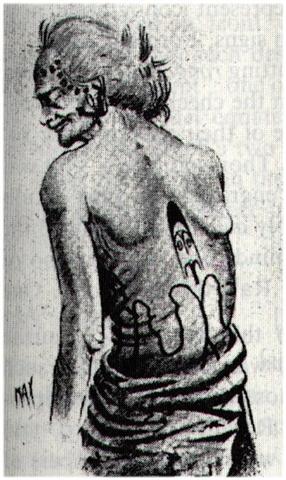 |

|












.jpg)
























.jpg)










